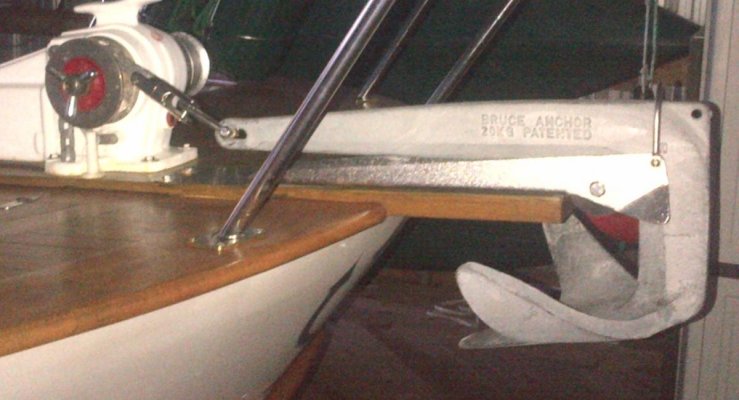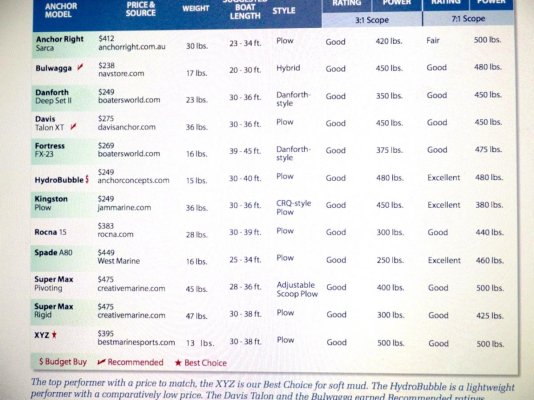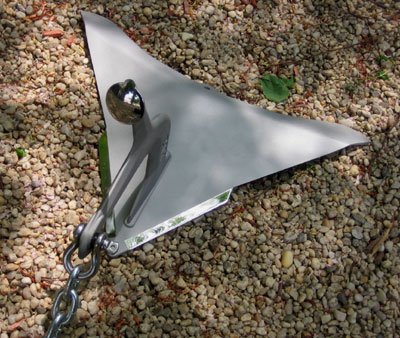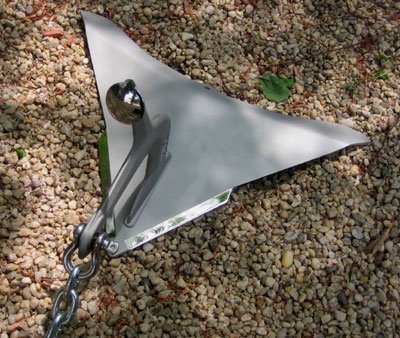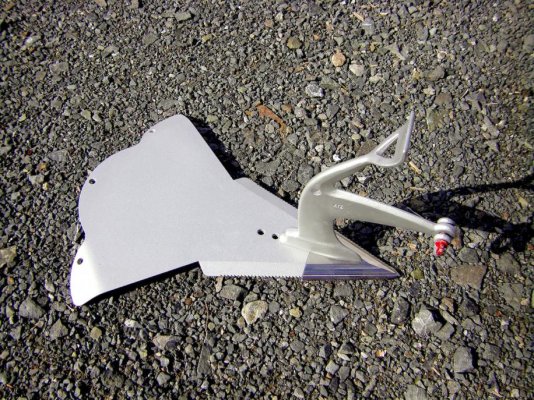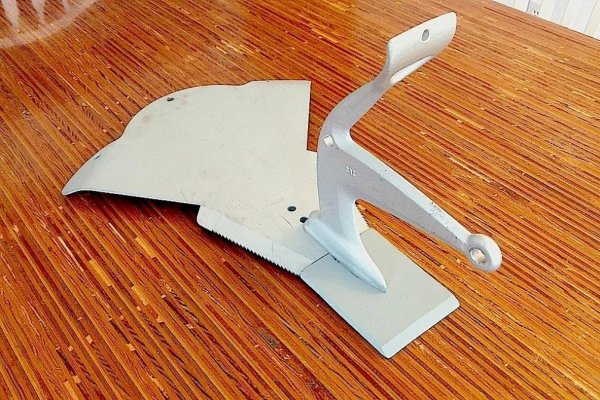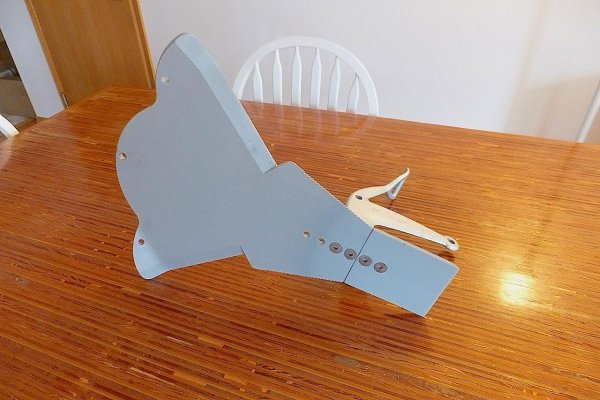Nomad Willy
Guru
All the claws I've ever seen look almost alike. It appears the present manufacturers of the Claw think as most boaters do that the Bruce anchor posses some kind of magic perfection that if deviated from would result in failure. Look where we'd be if car manufacturers thought that in 1929. We'd still be driving black model A's.
The following is part of an anchor test that included Claws.
"We were surprised it was one of the worst performers in our tests. The maximum resistance at 5:1 scope was 886lb – for a brief moment before breaking out. The tension graphs showed that the anchor never penetrated properly, setting and
releasing rapidly or simply scraping the bottom. Is this because the Claw doesn’t share the original geometry of the Bruce design? Were the Claw’s flukes simply not sharp enough to penetrate the harder clay-like sand?" We recorded similar results at 7:1 scope. The beach trials showed the Claw ploughing a longer trench down the beach than most. Our conclusions were that the flukes of the Claw weren’t sharp or weighted enough to penetrate"
In their pictures the Claw dragged along like this: Can't seem to copy and paste the pic. It was dragging along w only three flukes berried and one sticking up. The top of the shank was laying on it's side. Only two flukes penetrated. The third was pushing along a lot of mud and sand and it looked that the ploughed mass kept the third fluke from rotating downward to bury all three flukes.
The anchor tester showed his ignorance by stating that there may not have been enough weight on the fluke tips to penetrate. Most people that know anchors know that the Claws are one of the very best anchors in this regard. They present a very high percentage of their total weight on the fluke tips during the initial setting process. I've always thought this helped explain the reputation Claws have for setting fast.
Others feel the flukes aren't sharp enough. Me included.
A few Claws have slightly different looking flukes and perhaps different length shanks both lengthwise and vertically. Some have the short stubby and thick flukes characteristic of the original Claw. But some have slightly longer, narrower and thinner flukes. I'm wondering if these differences or any other difference makes a difference in the performance of the anchor. What's the difference between the Lewmar, Sea Dog or other Claws?
OR ... what is your opinion?
The following is part of an anchor test that included Claws.
"We were surprised it was one of the worst performers in our tests. The maximum resistance at 5:1 scope was 886lb – for a brief moment before breaking out. The tension graphs showed that the anchor never penetrated properly, setting and
releasing rapidly or simply scraping the bottom. Is this because the Claw doesn’t share the original geometry of the Bruce design? Were the Claw’s flukes simply not sharp enough to penetrate the harder clay-like sand?" We recorded similar results at 7:1 scope. The beach trials showed the Claw ploughing a longer trench down the beach than most. Our conclusions were that the flukes of the Claw weren’t sharp or weighted enough to penetrate"
In their pictures the Claw dragged along like this: Can't seem to copy and paste the pic. It was dragging along w only three flukes berried and one sticking up. The top of the shank was laying on it's side. Only two flukes penetrated. The third was pushing along a lot of mud and sand and it looked that the ploughed mass kept the third fluke from rotating downward to bury all three flukes.
The anchor tester showed his ignorance by stating that there may not have been enough weight on the fluke tips to penetrate. Most people that know anchors know that the Claws are one of the very best anchors in this regard. They present a very high percentage of their total weight on the fluke tips during the initial setting process. I've always thought this helped explain the reputation Claws have for setting fast.
Others feel the flukes aren't sharp enough. Me included.
A few Claws have slightly different looking flukes and perhaps different length shanks both lengthwise and vertically. Some have the short stubby and thick flukes characteristic of the original Claw. But some have slightly longer, narrower and thinner flukes. I'm wondering if these differences or any other difference makes a difference in the performance of the anchor. What's the difference between the Lewmar, Sea Dog or other Claws?
OR ... what is your opinion?
Last edited:


